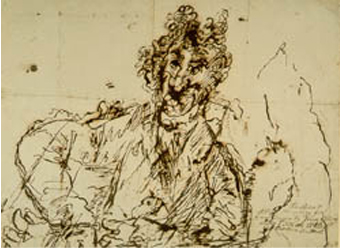''A CRITIC at my house sees some paintings,'' wrote Gauguin in his Intimate Journals. ''Greatly perturbed, he asks for my drawings. My drawings? Never! They are my letters, my secrets.'' For centuries, drawing has been regarded as the most private medium of artistic expression: the medium in which the artist is most truly and inescapably himself; the medium of involuntary self- revelation. Diderot, writing some 120 years before Gauguin, referred to the sketch as ''the artist's work when he is full of inspiration and ardour, when reflection has toned down nothing; it is the artist's soul expressing itself freely''.
Yet admiration for the spontaneity of drawing has also, traditionally, been tempered with a certain suspicion. Deanna Petherbridge, curator of ''The Primacy of Drawing'', a new South Bank touring exhibition which opened in Bristol last week, notes wistfully in its catalogue that: ''It is always with some regret that art historians announce that they cannot link a particular drawing with a work in another medium (the hierarchical value of painting or sculpture is implicit in this), and must settle for a drawing being autonomous.''
''The Primacy of Drawing'' is a small exhibition with large ambitions. Its curator is, herself, an artist known for large pen and ink drawings - disorientating visions of imaginary architecture that distantly echo Piranesi - so perhaps it is no surprise that she should have chosen this opportunity to make out her case for drawing as an unjustly neglected medium. This is a polemical show, whose chief argument - ''that drawing constitutes a super-text (definitely not a sub- text) to the history of art'' - seems intended to provoke further debate between those who either support or oppose the idea that draughtsmanship still has a central role to play in the practice and education of artists today....


